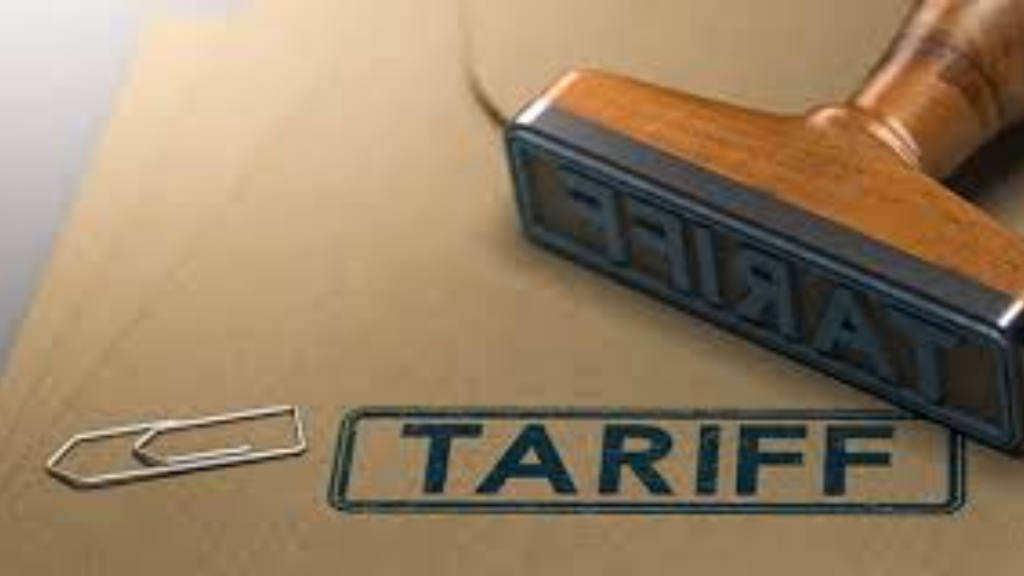BENTONVILLE, ARKANSAS — Walmart, the nation’s largest retailer, finds itself at the heart of a growing controversy surrounding the economic effects of tariffs imposed during the Trump administration.
The retailer’s recent announcement about impending price increases has ignited debate after former President Donald Trump publicly urged Walmart to absorb the costs rather than pass them on to consumers.
This clash underscores the broader challenges American businesses face amid evolving trade policies, and the potential ripple effects for consumers nationwide.
Trump’s Directive and Walmart’s Position
In a direct social media post on his platform Truth Social, former President Trump criticized Walmart’s decision to raise prices, urging the company to “eat the tariffs” rather than increasing costs for shoppers.
Trump wrote, “Walmart should STOP trying to blame Tariffs as the reason for raising prices throughout the chain… Between Walmart and China they should, as is said, ‘EAT THE TARIFFS,’ and not charge valued customers ANYTHING.”
Walmart responded by acknowledging the former president’s statement, emphasizing its ongoing commitment to keeping prices low for customers. However, the company clarified that the recent tariffs are significantly higher and more burdensome than in previous years.
In a statement, Walmart said it will absorb some of the costs but explained the financial reality that the scale of these tariffs makes it impossible to avoid price increases altogether.
As the country’s largest retailer, Walmart’s pricing strategy affects millions of Americans, especially those relying on affordable groceries and household goods. This dispute highlights the tension between political rhetoric and economic realities.
Tariffs and Their Impact on Walmart’s Supply Chain
The tariffs at the center of this dispute primarily target goods imported from China, a key source of many of Walmart’s products. These tariffs have increased Walmart’s import costs, creating pressure on profit margins.
Although the government recently reduced some tariff rates from a high of 145% to around 30%, Walmart says even this lower rate remains unsustainable over the long term.
Industry insiders report that Walmart plans to begin modest price hikes by the end of May, with more significant increases likely in June. These adjustments will affect a broad spectrum of products including groceries, electronics, clothing, and household essentials.
CEO Doug McMillon and CFO John David Rainey have stated publicly that the company is making every effort to limit price increases and mitigate the impact on customers. However, the reality is that absorbing tariff costs indefinitely would jeopardize Walmart’s financial health and its ability to offer competitive prices.

Broader Economic and Retail Sector Implications
Walmart’s announcement serves as a bellwether for the wider retail industry, where many companies face similar pressures. Tariffs on imported goods increase supply chain expenses, forcing retailers to choose between absorbing costs, which reduces profits, or passing them onto consumers, which risks lower sales.
Economic analysts suggest Walmart’s decision to increase prices may prompt other major retailers to follow suit, potentially leading to a ripple effect of inflationary pressures in consumer markets across the country.
Furthermore, Treasury Secretary Scott Bessent acknowledged the likelihood of price increases resulting from the tariffs. In recent discussions with Walmart’s leadership, Bessent recognized the company’s efforts to absorb some costs but conceded that full absorption is not feasible.
How Consumers May Be Affected
For everyday shoppers, Walmart’s price increases mean that common household items may cost more in the coming months. Analysts expect staples such as bananas, avocados, coffee, electronics, and even clothing to experience noticeable price hikes.
Given these anticipated changes, financial experts advise consumers to adopt cost-saving strategies. Shoppers might consider purchasing store-brand alternatives, which tend to be less expensive, buying in bulk to reduce unit costs, and closely monitoring sales and discount opportunities.
Consumers can also stay informed about price trends and product availability by regularly visiting Walmart’s official website or checking updates from consumer protection agencies such as the Federal Trade Commission (FTC). The FTC provides guidance on consumer rights and pricing issues at www.ftc.gov.
Government Role and Trade Policy Complexity
The dispute between Walmart and the Trump administration’s trade policies illustrates the intricate balance between protecting domestic industries and maintaining affordable consumer prices. Tariffs are intended to encourage American manufacturing by making imported goods more expensive.
However, as Walmart’s case shows, these tariffs often translate into higher costs for everyday shoppers, complicating the political and economic landscape.
The U.S. Trade Representative (USTR) oversees tariff policies and negotiations with foreign trade partners. More information on USTR’s role and tariff schedules can be found at ustr.gov. Meanwhile, the U.S. Department of Commerce provides resources on trade regulations and import duties at commerce.gov.
Looking Ahead
As Walmart proceeds with planned price adjustments, consumers and policymakers alike will watch closely how this situation evolves. The retailer’s challenge exemplifies the broader economic realities faced by many companies in a globalized supply chain subject to shifting trade policies.
While Walmart aims to minimize the impact on shoppers, the company’s move signals that tariff-induced price increases are becoming inevitable. For consumers, adapting shopping habits and remaining informed will be key strategies to manage rising costs.
Conclusion
The dispute between Walmart and former President Donald Trump over tariff-related price increases highlights the complex interaction between political decisions, corporate economics, and consumer wellbeing.
With tariffs continuing to influence import costs, Walmart’s decision to raise prices underscores the unavoidable consequences for retail pricing and American households.
Consumers can prepare for these changes by staying informed through official government resources such as the Federal Trade Commission (www.ftc.gov) and the U.S. Trade Representative (ustr.gov), while retailers navigate the challenging balance of pricing and profitability in a dynamic economic environment.
Disclaimer – Our team has carefully fact-checked this article to make sure it’s accurate and free from any misinformation. We’re dedicated to keeping our content honest and reliable for our readers.
